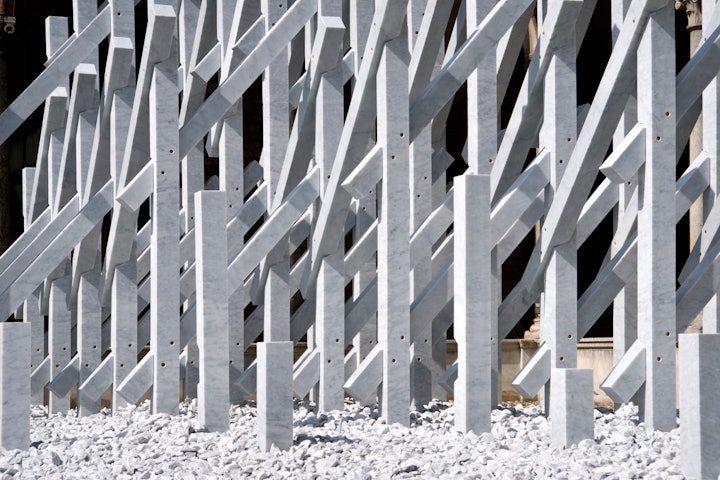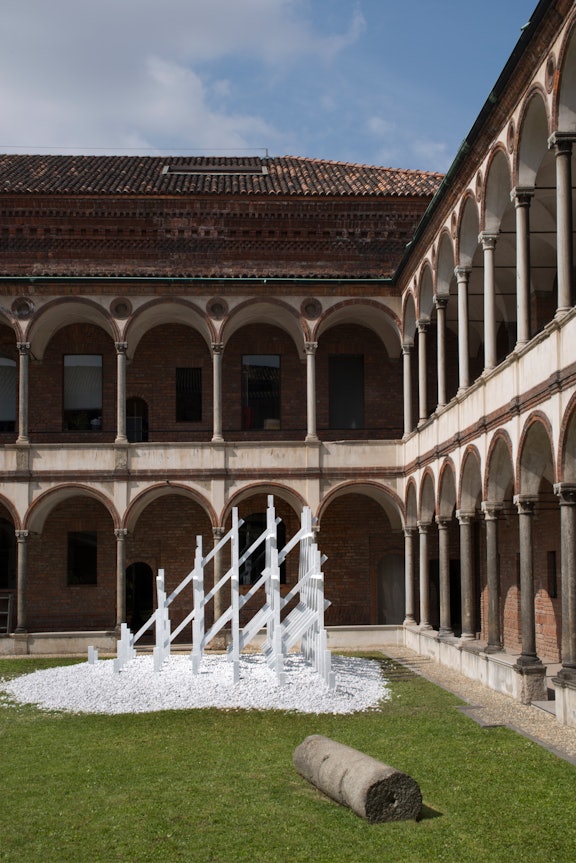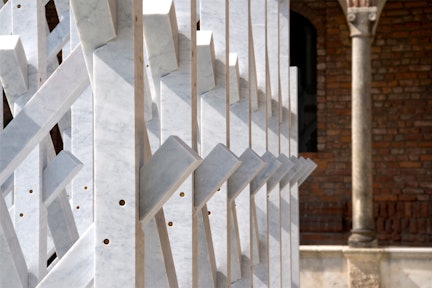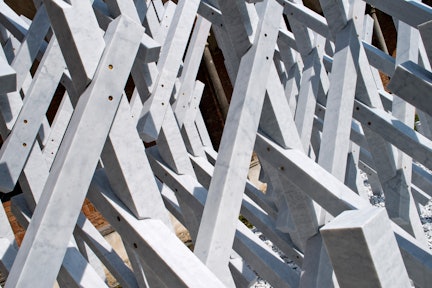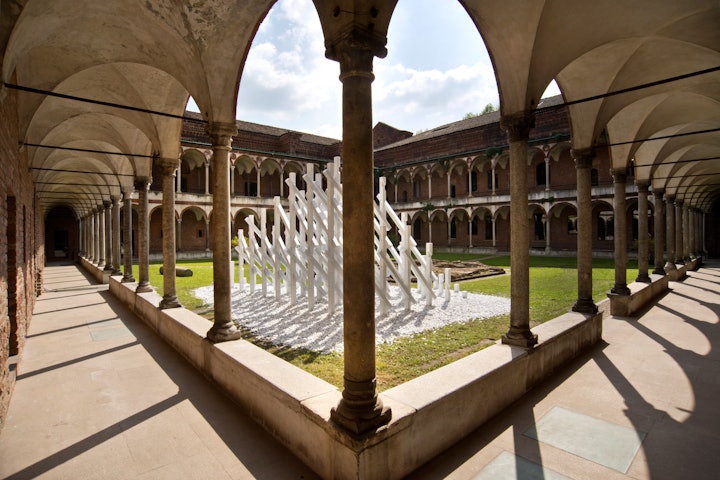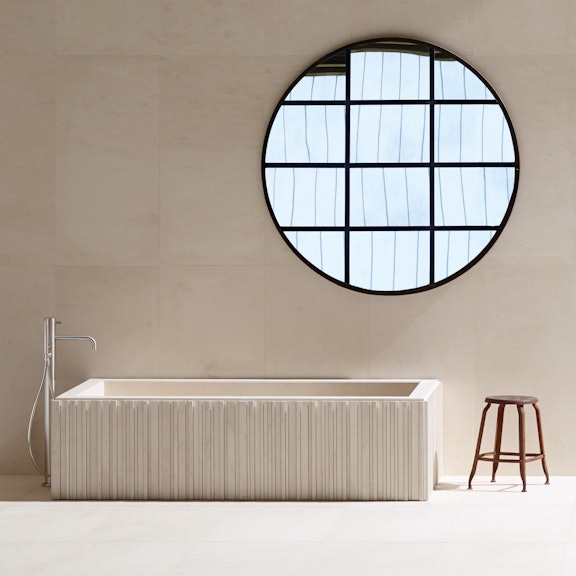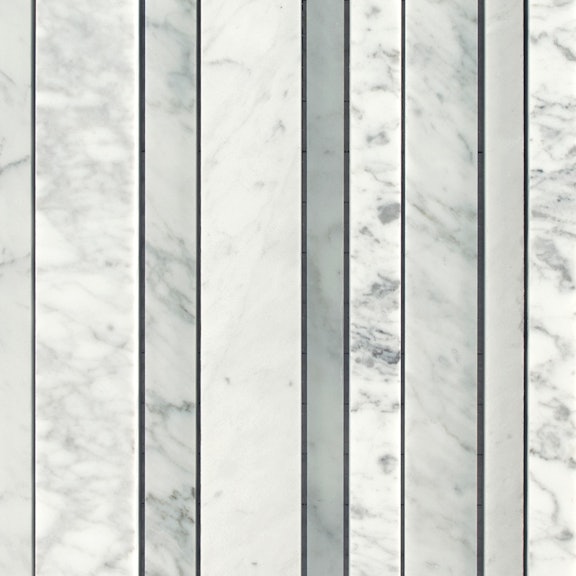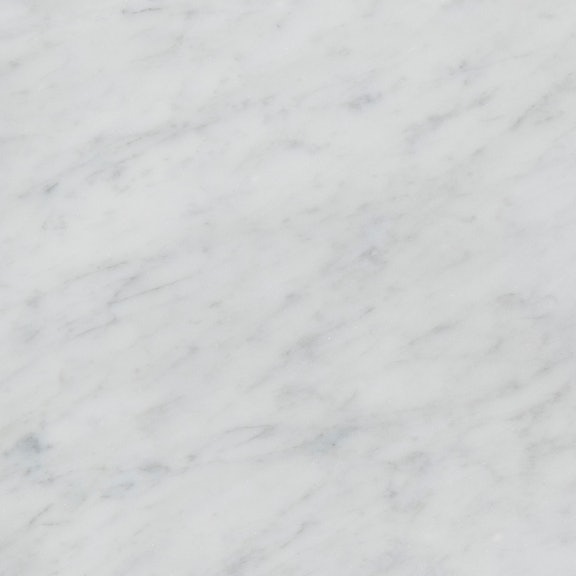The Stone Forest
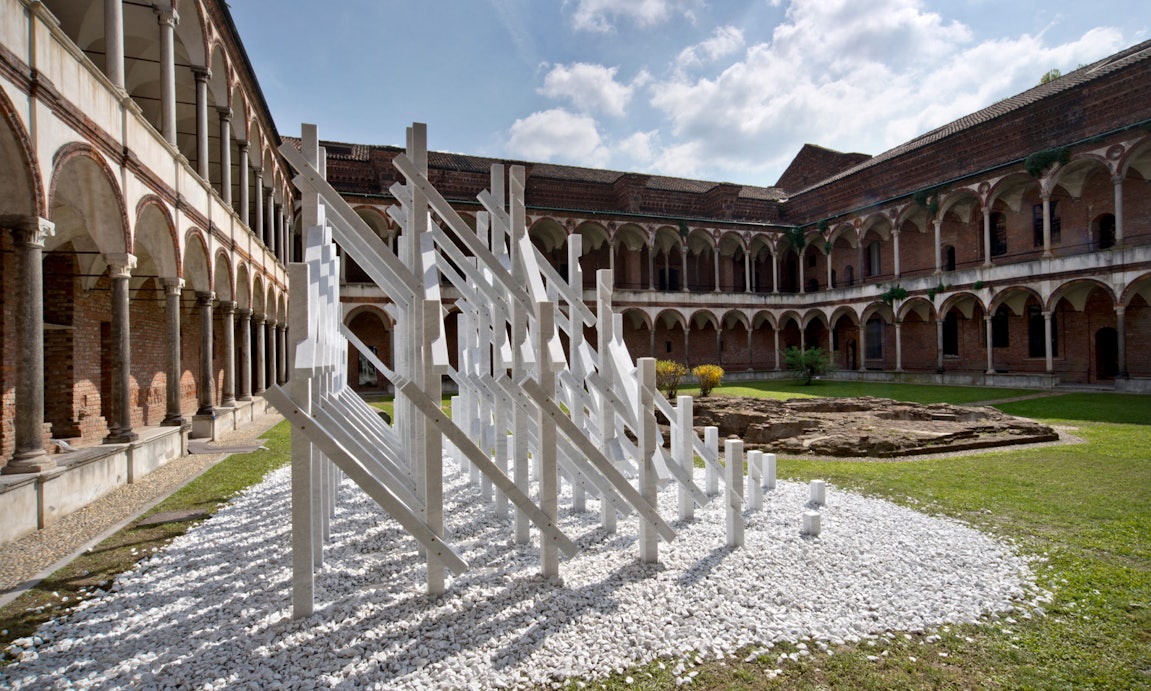
The essential illusion of lightness.
When thinking about the characteristics generally associated with natural stone, the most immediate responses tend to include words such as old, precious, long-lasting and heavy. The latter is particularly interesting, because although it is an undeniably accurate description, it is also where architects, designers and engineers can have a lot of fun challenging its very notion.
A case in point is the Stone Forest, designed by renowned Japanese architect Kengo Kuma for the 2014 edition of Milan’s Salone del Mobile. His design was based on jigoku-gumi, a joint system which is used to form grids in Japanese architecture. For this project, however, he wanted to use stone instead of the wood which is traditionally used, yet still retain the essential illusion of lightness.
The chance to push the conventional limits of working with stone was a challenge Salvatori relished. The first question was which stone would best bring the idea to fruition. In consultation with Salvatori, the architect selected Bianco Carrara, not only for the purity of its aesthetic, but also for its structural strength. It was key that even when cut into the slender struts which were the defining element of the design, the stone had to be strong enough to support a vast overall structure.
The construction technique required extraordinary precision, firstly in terms of designing the size of the stone batons and their positioning, and secondly when it came to cutting. Computer calculations were used for the former and precision engineering was required for the latter, with every baton which formed the lattice-like structure being calibrated to the nth degree, so that they slotted perfectly into another. The fixing system was a simple wooden dowel which acted as a pin, holding two stone struts together.
The foundation was a wooden frame which was weighted down with sand bags. Upright batons were then inserted into this base with diagonal rods being fixed in place to create mini-modules which were then multiplied horizontally and vertically to arrive at a total structure of 4.5 x 7.5 metres with a height of 3.5 metres. A team of around eight Salvatori employees worked on site for almost week to erect it, finishing it with tonnes of Bianco Carrara pebbles to create a zen-like effect which respected the Japanese principles of calm and simplicity. A series of tiny uplighters where then nestled at the base of the structure, bringing a sense of movement to the forest.
Kengo Kuma described the structure as rational and extremely functional, in the way it used a simple construction technique which builds layer upon layer to create a kind of three-dimensional effect. In his words: “I am always interested in lightness through a natural material, and this is a very good example of that.”
Designed by Kengo Kuma

